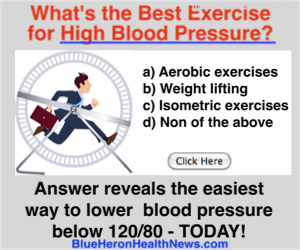
Image Credit: Flickr.com
One of the biggest myths related to baby boomers, that has been floating around for a very long time now is that they are not willing to utilize digital technologies or realize its significant gains.
People have often assumed that baby boomers opt more for conventional ways of doing things, but the reality is in stark contrast to this assumption. Interestingly, the number of smartphone users has grown tremendously in the past few years. An astonishing 42% of people, aged 65 and above, now report that they have a smartphone among their possessions.
This is a dazzling rise in exposure which hovered around a fledgling 18% mark just 5 years back, i.e., 2013. And this is not only a mere statistic. The growing proliferation of smartphones among older adults or baby boomers has encouraged researchers to see a lot of services related to the senior population in a whole new light.
Healthcare is probably the topmost concern when it comes to aging adults, but traditional healthcare methods are plagued with the problems of high costs, long waiting times, and of course, herculean physical efforts. Yes, it’s not always easy to reap the best possible results while using the traditional healthcare methods on a consistent basis.
For older people, taking out time and driving physically to a healthcare facility every week or a couple of days for regular checkups in case of chronically ill patients is too much of a fuss, hence the chances of them missing critical care sessions rise exponentially. This sadly makes patients more vulnerable towards diseases than they would have been otherwise.
However, telehealth solutions are fast becoming the antithesis of how conventional healthcare access has been delivered up till now, and they are set to redefine the relationship that baby boomers share with their medical and healthcare concerns.
Just like Uber redefined the relationship between the rider and the driver, telehealth solutions are set to revolutionize the field of healthcare in a similar vein. Technology is set to bring the doctor to the patient 24/7 – something that was almost impossible in previous years.
For baby boomers, to maintain their quality of life at the most premium level, they need to have constant monitoring of their health combined with instant access to advanced medical advice.
And both of these things have combined to give rise to the phenomenon of telehealth solutions, but first, we need to delve into a bit of more detail on how telehealth solutions actually work and how are they more advantageous to patients, especially those belonging to the baby boomers generation.
Telehealth Solutions:
Telehealth primarily is a system of providing healthcare and medical aid to people without the need to visit an actual medical facility or a healthcare professional in person.
This system or set of healthcare solutions is made possible through the use of digital technology and portable equipment that allows patients and doctors to remain connected constantly. The advent of equipment like personal smartphones, wearable diagnostic aids, and cloud database management systems have made telehealth a viable reality of our modern times.
Patients can be guided by systems managed through cloud databases that provide info or a recommended course of action once a query has been received. On the other hand, patients can be assisted with real-time doctors who can interact with patients through video conferencing and refer to any diagnostics provided by the patient’s wearable medical aids.
For healthcare organizations or even governmental agencies concerned with healthcare, there is always increasing pressure when it comes to making top-notch medical facilities available to the broadest range of people without blowing costs out of proportion.
Not all patients or those who are at risk can be kept at the hospital at all times. That’s just plain unfeasible on all accounts. But what telehealth does is that it creates a virtual hospital which can be extended to any size imaginable.
There is also no dearth of possibilities of the kind of ailments that can be addressed. Telehealth can also offer alternatives like providing the best management initiatives to those who are not currently a patient proper but are at a high risk of contracting a problem in the near future.
For, e.g., an elderly man around the age of 75 with hypertension is at higher risk of contracting a paralysis attack or a stroke than a patient who is 50 years old.
With a portable blood pressure band on his arm, measuring his blood pressure at all times, connected with an app that is programmed to recommend a due course of action depending on blood pressure levels, the elderly man can significantly reduce the risk of his problem snowballing into something far more dangerous than it currently is. This is precisely what telehealth solutions can help us achieve – a far better and healthier society, especially where the concern is about the people who are at their most vulnerable stages regarding health, i.e., the baby boomer generation.
But having said all of this, one of the biggest impediments towards achieving a perfect scenario in leveraging the power of telehealth solutions remains the designing of these aids and tools in such a way that they can be quickly learned, managed and utilized correctly by the elderly.
Yes, the baby boomer generation is substantially increasing its use of smartphones and the proliferation of this great device continues to rise among the elderly. However, many facets of utilizing tech and gadgets remain a confusing concept for them. There is still some “awkwardness” that continues, and it has to be weeded out.
User experience or UX design has been talked about a lot in the tech world, but not many designers have singled out and specialized on how to make technology more user-friendly for the elderly.
This can include many things like increasing the font size to improve readability, making sure the colors and themes used in the background aren’t too hazy or gaudy, points on the screen are more comfortable to click and scroll through and more.
For telehealth solutions, to realize their full potential, the devices that are in the hands of the elderly, need to be as user-friendly as possible. Simple, easy to understand tutorials should accompany the medical aids and technologies to make sure that the old person using them can do so independently.
What to Expect?
Telehealth solutions can undoubtedly be the answer to most of the critical problems in tackling elderly healthcare issues. However, is there a potential to deliver – only time would tell.
We remain optimistic because the possibilities are far too endless to lose hope in this initiative but to really make its mark, telehealth solutions providing firms across the world must come forward and address the obstacles that lie in their path regarding making this technology genuinely beneficial to the fullest.
Problems like UX design improvements, learning and training initiatives and lack of specialized firms dealing in this area definitely needs to be addressed fast because the current impact of telehealth solutions remains limited at best, despite its unprecedented power to revolutionize global healthcare, especially for the elderly.
But the future would definitely see this concept progressing further because the vacuum needs to be filled and telehealth solutions seem to be the only viable candidate to successfully do it in the times to come.









